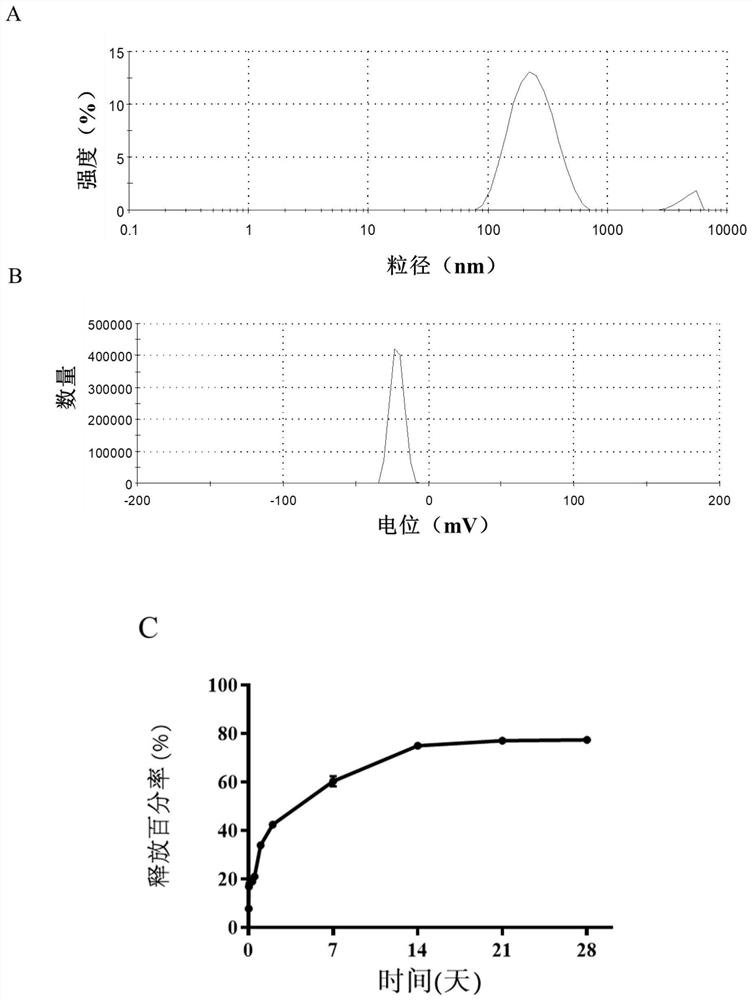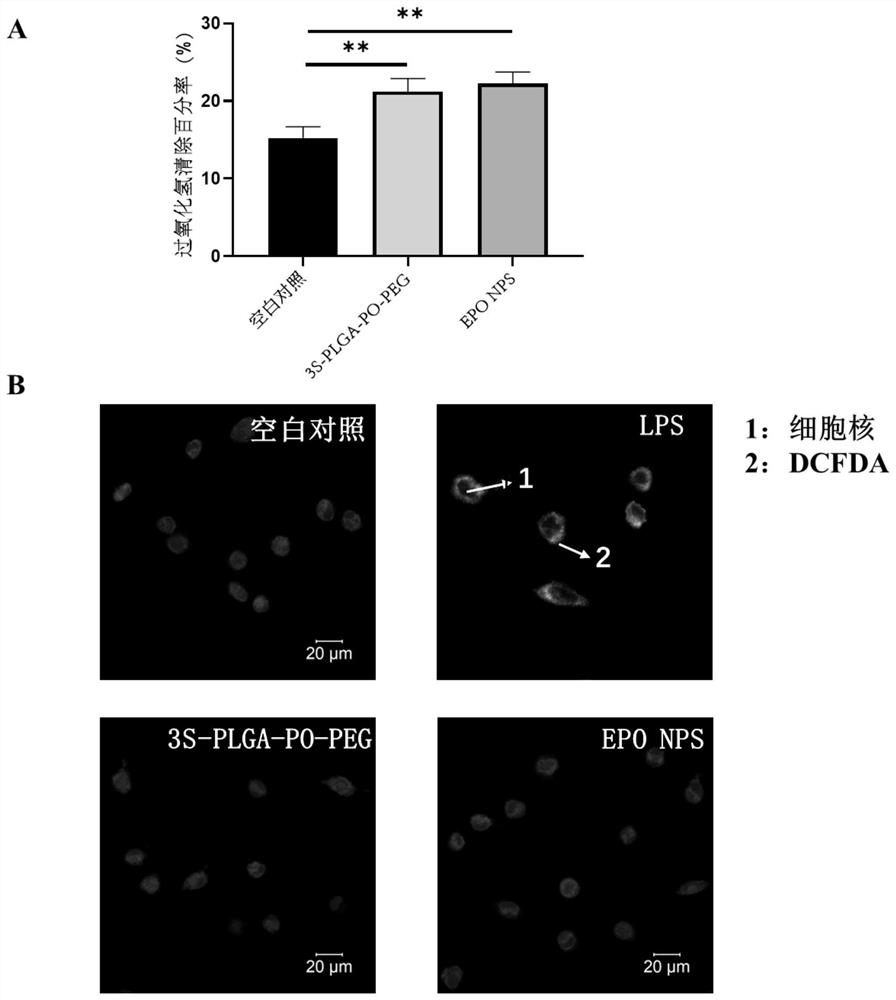Application of ROS response type nanoparticles coated with hematopoietic growth factors in preparation of drugs for treating hematopoietic injury
A technology of hematopoietic growth factor and hematopoietic injury, applied in the field of nanomedicine and biomedicine, can solve the problems of single effect and limited effect, and achieve the effect of low cost, improved bioavailability, and good disease treatment effect
- Summary
- Abstract
- Description
- Claims
- Application Information
AI Technical Summary
Problems solved by technology
Method used
Image
Examples
Embodiment 1
[0028] Coated with nanoparticles prepared ROS responsive hematopoietic growth factor, comprising the steps of:
[0029] (1) Take 70mg hydrogen peroxide-sensitive amphiphilic biomaterial (Chinese Patent No. Example 4 Preparation of the three-arm embodiment of the present invention in 201410606622.9 hydrogen peroxide-sensitive amphiphilic biomaterial PLGA-PEG) was dissolved in 2ml dichloro methane, to obtain a solution;
[0030] (2) 30mg of ovalbumin (OVA) was dissolved in 1mL distilled water to obtain a solution II; 100μL the erythropoietin (EPO) (10000IU / mL) was added to the solution II to obtain a solution three, 4 ℃ refrigerator;
[0031] (3) The solution was placed in a ice bath, using ultrasonic cell disrupter, a shear rate of 20%, and the solution was added dropwise to a solution of a three, sonicated 5min, an emulsion is formed;
[0032] (4) take 20mL concentration of 0.5% by mass aqueous solution of emulsifier (polyvinyl alcohol aqueous solution of an average molecular we...
Embodiment 2
[0035] Coated with nanoparticles prepared ROS responsive hematopoietic growth factor, comprising the steps of:
[0036] (1) Take 10mg hydrogen peroxide-sensitive amphiphilic biomaterial (prepared in Example 4 of the present invention in Chinese Patent No. 201410606622.9) was dissolved in 2ml of dichloromethane, to give a solution;
[0037] (2) 5mg of bovine serum albumin was dissolved in 1mL distilled water to obtain a solution II; the 1μL thrombopoietin (15000U / mL) was added to the solution II to obtain a solution three, 4 ℃ refrigerator;
[0038] (3) The solution was placed in a ice bath, using ultrasonic cell disrupter, a shear rate of 10%, and the solution was added dropwise to a solution of a three, sonicated 2min, an emulsion is formed;
[0039] Aqueous emulsifier solution (average molecular weight ~ 70,000 polystyrene sulfonate) (4) taking 1mL concentration of 5%, was placed in an ice bath conditions, using ultrasonic cell disrupter, a shear rate of 10%, the emulsion was ...
Embodiment 3
[0042] Coated with nanoparticles prepared ROS responsive hematopoietic growth factor, comprising the steps of:
[0043] (1) 100mg of hydrogen peroxide-sensitive amphiphilic biomaterial (prepared in Example 4 of the present invention in Chinese Patent No. 201410606622.9) was dissolved in 2ml of dichloromethane, to give a solution;
[0044] (2) 50mg hemocyanin was dissolved in 1mL distilled water to obtain a solution II; 2000μL the granulocyte - macrophage colony stimulating factor (150μg / mL) was added to the solution II to obtain a solution three refrigerated. 4 deg.] C;
[0045] (3) The solution was placed in a ice bath, using ultrasonic cell disrupter, a shear rate of 35%, and the solution was added dropwise to a solution of a three, the ultrasonic 10min, an emulsion is formed;
[0046] (4) take 1000mL emulsifier concentration of 0.1% by mass aqueous solution (average molecular weight of ethylene oxide - propylene oxide block copolymers and 12600), was placed under ice-cooling,...
PUM
| Property | Measurement | Unit |
|---|---|---|
| dispersity | aaaaa | aaaaa |
Abstract
Description
Claims
Application Information
 Login to View More
Login to View More - R&D
- Intellectual Property
- Life Sciences
- Materials
- Tech Scout
- Unparalleled Data Quality
- Higher Quality Content
- 60% Fewer Hallucinations
Browse by: Latest US Patents, China's latest patents, Technical Efficacy Thesaurus, Application Domain, Technology Topic, Popular Technical Reports.
© 2025 PatSnap. All rights reserved.Legal|Privacy policy|Modern Slavery Act Transparency Statement|Sitemap|About US| Contact US: help@patsnap.com



